



Insert Drafting
Drafting Offset on Plane
Offset on Plane
The Offset on Plane command enables you to create plane offset curves. An offset curve is a curve whose distance from a selected curve is constant at all points.
Note that this command is available only in the Model and 2D Profile modes and not in the 3D Profile mode.
An offset curve of a plane curve on its placement plane is constructed by moving each point by a given distance (the offset distance) along the normal to the curve.
After starting the command, you need to select the curves to offset for the Curves selector. You can select chains of consecutive curves by right-clicking on the portion of the curve and then selecting Select Chain from This in the context menu.
Chain from This in the context menu.
Two different offset modes are available in the Offset drop-down list:
In the Transition drop-down list you can select the method to be used upon selection of a chain of consecutive curves. Some of these options are not displayed on starting the command in the 2D Profile environment, as they are not relevant there.
| Extend parameter when this option is selected, if the chain of curves has sharp corners and the offset requested is made in the area on the outside of them, the corners are not filleted, instead the adjacent curves are extended. When it is not possible to extend the curve, a warning will be displayed to highlight the failed transition. |
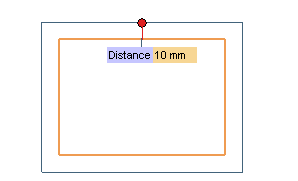 |
| Extend curvature this option can be selected when it is not possible to obtain a parametric curve extension through the Extend parameter option, since the extended offset curves would not intersect. Two additional extension curves will be created, so as to obtain the intersection. The two curves will have curvature continuity (G2) with the offset curves. |
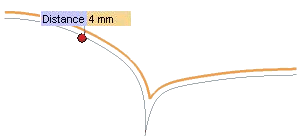 |
| Extend tangent this option can be selected when it is not possible to obtain a parametric curve extension through the Extend parameter option, since the extended offset curves would not intersect. Two additional extension curves will be created, so as to obtain the intersection. The two curves will have tangency continuity (G1) with the offset curves. |
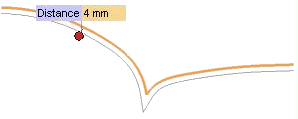 |
| Fillet when this option is selected, if the chain of curves has sharp corners and the offset requested is made in the area on the outside of them, they are filleted. |
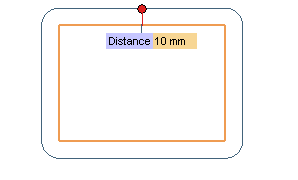 |
| None when this option is selected no trimming or filleting action is performed on the offset curves. Please note that, if the Automatic cut check box is not selected in the Construction - Advanced category of the System Options, the None option is automatically selected by the application, and no other choice is possible. |
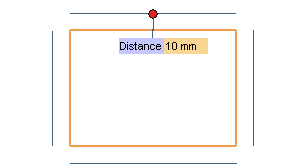 |
The Copies check box enables you to choose either to copy or to move the original curves.
| Automatic selection of all boundary curves of a face of a solid Note that when the Copies check box is selected it is possible to select a face of a solid so as to automatically select all its boundary curves. |
There may be situations in which some of the resulting offset curves are overlapped. A Curve(s) to Be Deleted selector is displayed and available in the selection list when the resulting offsets include overlapping curves, so as to enable you to get rid of them. For example, take a look at the following model.

Suppose you start the command and select all the lines of the two rectangles. For a certain value of the distance, the offset of the second rectangle is reduced to a line (two overlapping lines). In this case the Curve(s) to Be Deleted selector is displayed in the selection list.
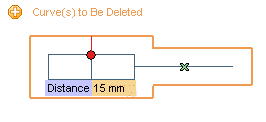
You can click on the selector and then select the markers in the middle of the curves to be removed. The selected curves will be deleted.
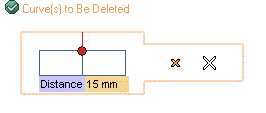
The Remove All Overlaps check box is also available, which enables you to remove all overlapping curves simultaneously, without the need of selecting them one by one.
The Update preview at end drag check box under More Options enables you to control the preview update mode when the offset curves are dragged using the proper handle.